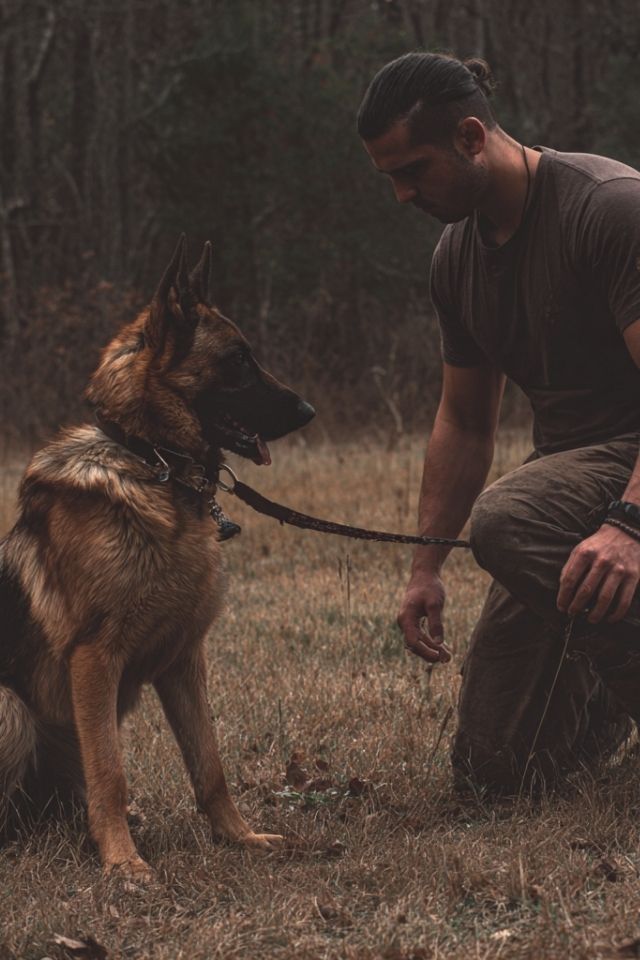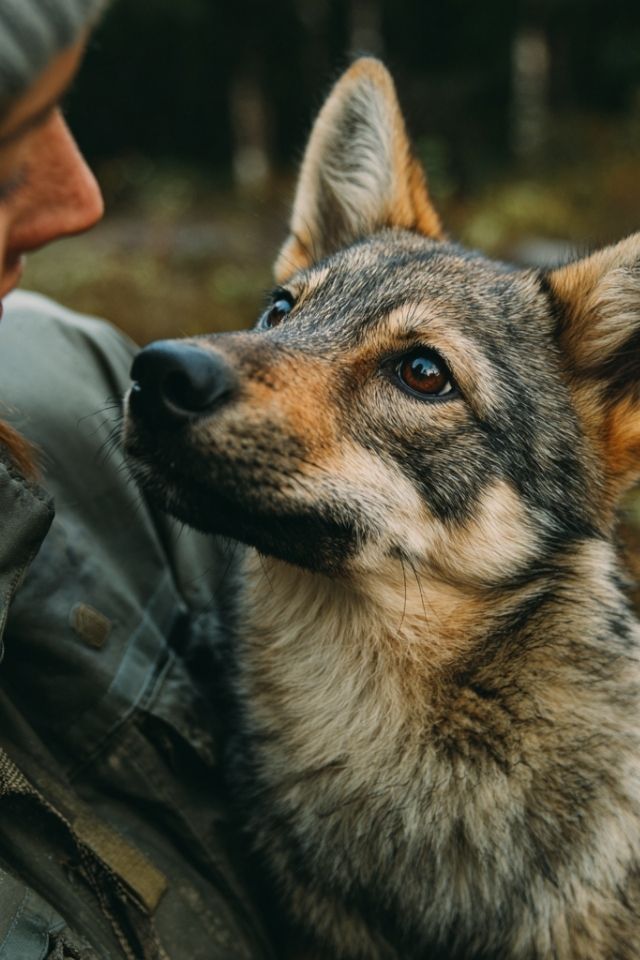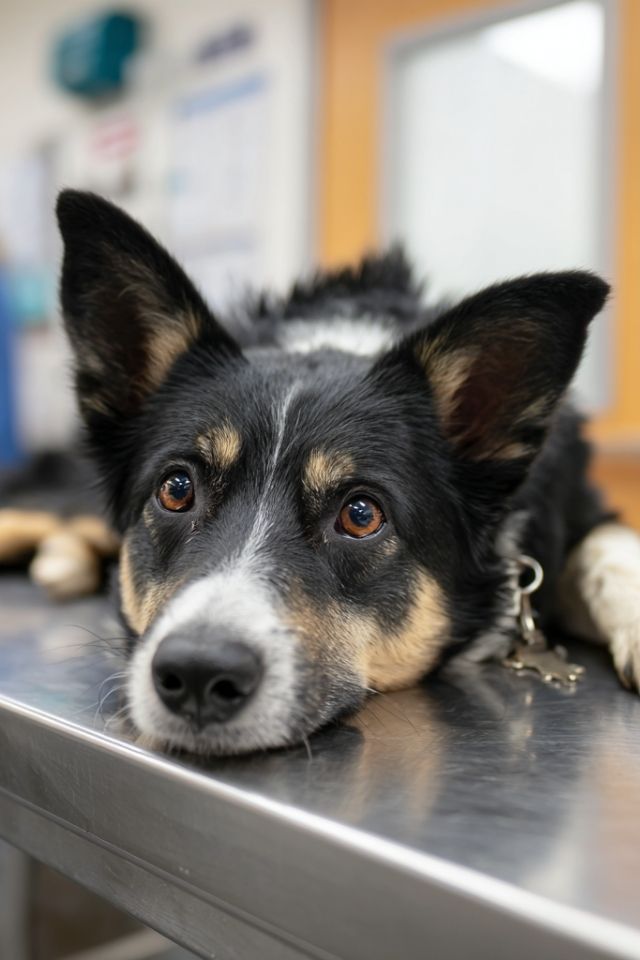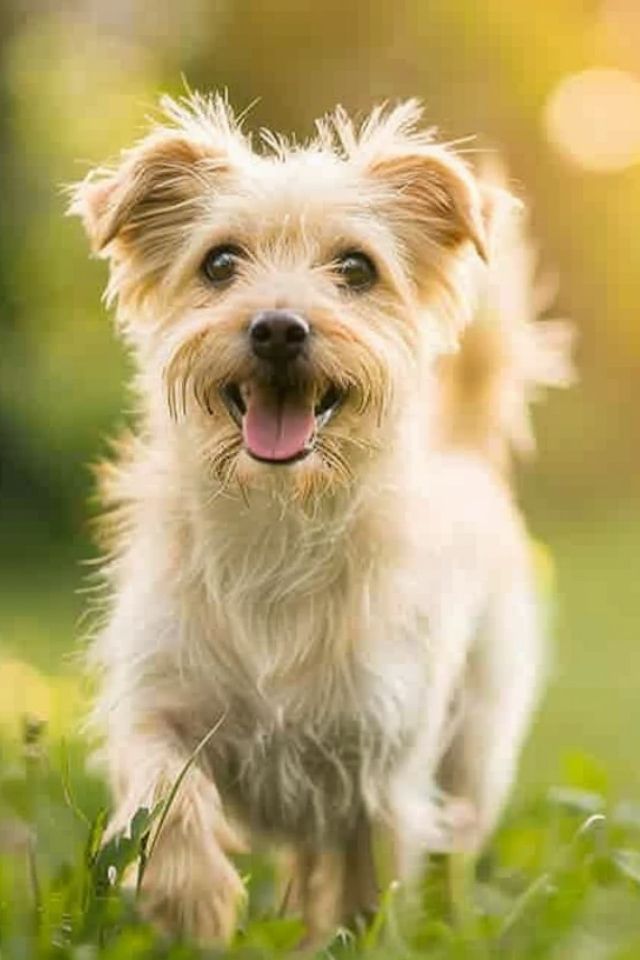The agility course stretched before them like a familiar dance floor. Maya watched her Border Collie, Scout, navigate the first three jumps with his characteristic precision—each leap a testament to months of practice, each landing soft as morning dew. But on the fourth jump, something shifted. The bar tumbled. Then the fifth. By the sixth, Scout was offering spins instead of jumps, his bright eyes clouded with something Maya had never noticed before: the weight of too much thinking.
This is the moment when the invisible conversation between human and canine shifts from dialogue to monologue—when we keep talking while our dogs’ minds have already whispered, “enough.”
The Hidden Language of Mental Fatigue
In the quiet space between command and response lives a truth we often miss: our dogs’ minds, brilliant as they are, hold boundaries as real as any physical fence. Scout’s stumbling wasn’t defiance or forgetfulness. It was his prefrontal cortex—that remarkable region we share with our canine companions—raising a flag of surrender.
Think of your dog’s working memory as a sacred vessel, capable of holding only so much before the precious contents begin to spill. When we pour knowledge into this vessel without pause, without respect for its capacity, we risk losing not just the lesson of the moment, but the trust woven into every interaction. This is where the NeuroBond—that invisible thread connecting your nervous system to theirs—begins to fray under the weight of our good intentions.
Each dog carries their own cognitive signature. The high-drive Malinois who seems tireless in body may reach mental saturation while their muscles still yearn to work. The gentle Basset Hound, often mistaken for lazy, might simply reach their thinking threshold sooner, their wisdom lying in knowing when to rest. Understanding these individual rhythms transforms training from a battle of wills into a dance of mutual respect.
Reading the Subtle Symphony of Overwhelm
Before Scout knocked that first bar, his body had been speaking in whispers Maya hadn’t learned to hear. The slight delay before taking the jump—milliseconds stretching into moments. The way his tail, usually a confident flag, had dropped just a degree or two. These weren’t random signals; they were his mind’s way of saying, “I’m trying, but the pathways are getting foggy.”
Watch closely, and you’ll see your dog’s cognitive fatigue paint itself across their behavior like weather patterns across the sky. The Golden Retriever who suddenly becomes fascinated with a blade of grass during recall practice. The German Shepherd cycling through their entire repertoire—sit, down, spin, paw—when all you asked for was “stay.” This isn’t creative disobedience; it’s behavioral spillover, the mind’s attempt to release pressure through familiar patterns when new ones become too heavy to hold.
Some dogs begin speaking their overwhelm through displacement—that sudden urgent need to scratch when there’s no itch, the obsessive sniffing when there’s nothing new to smell. These behaviors serve as pressure valves for an overwhelmed nervous system, much like how we might fidget or pace when our own minds reach saturation.
The Art of Distributed Learning
The old way tells us that repetition builds mastery. But what if the secret lies not in how much we practice, but in how we distribute the learning across time? Like seeds scattered across fertile ground rather than piled in one spot, knowledge needs space to grow roots.
For the young mind still forming its cognitive architecture—those puppies under twelve months whose neurons are still finding their paths—three minutes of focused attention can accomplish more than thirty minutes of diminishing returns. Imagine teaching “sit” during the morning coffee ritual, “down” as the afternoon light slants through windows, “come” as evening settles into night. Each micro-session a pearl on the string of learning, each rest between them allowing the mind to weave understanding into memory.
The spacing effect—that magical phenomenon where twenty-four hours between lessons creates stronger memories than hours of repetition—reveals itself most clearly in our dogs. Your Labrador learning to retrieve will hold the lesson more deeply from three ten-minute sessions across three days than from an hour of Saturday afternoon repetition. The brain, it seems, needs time to dream the lesson into permanence.
Environmental Choreography
The living room, with its familiar scents and predictable sounds, asks little of your dog’s cognitive resources. Here, the mind can focus entirely on the task at hand, like a musician practicing in a soundproof studio. But move that same lesson to the park—with its symphony of distractions, its kaleidoscope of smells, its parade of passing dogs—and suddenly your dog’s brain must become both student and security guard, simultaneously learning and filtering.
This isn’t failure when your Beagle maintains focus for ten minutes in the backyard but only three at the dog park. This is the brain doing exactly what it should: allocating resources where they’re needed most. Environmental complexity doesn’t just add distraction; it multiplies cognitive load exponentially.
Even subtle environmental factors write themselves into the cognitive equation. The fluorescent lights in some training facilities create a barely perceptible visual stress. A hot day doesn’t just tire the body; it depletes the mind’s reserves. By understanding these invisible influences, we become conductors of our dogs’ cognitive orchestra, knowing when to simplify the score and when to add complexity.
The Working Mind’s Endurance
In the pre-dawn darkness, the search and rescue dog begins their work, nose to ground, processing thousands of scent molecules while simultaneously navigating terrain, maintaining contact with their handler, and suppressing their own instincts to chase or play. This isn’t just physical work; it’s cognitive marathon running.
These remarkable dogs teach us something profound about mental endurance: it can be built, like muscle, through progressive training. But unlike muscle, which shows its fatigue through trembling or slowing, the thinking mind hides its exhaustion behind drive and determination. The detection dog who works multiple searches shows no obvious fatigue, yet their heart rate variability tells a different story—the subtle physiological signature of a mind pushed to its edges.
Sport dogs navigating agility courses aren’t just running and jumping; they’re solving spatial puzzles at speed, each obstacle requiring split-second calculations of distance, timing, and body position. When competition adds its own cognitive weight—new venues, unfamiliar dogs, the electric energy of anticipation—even champions can find themselves missing weave entries they’ve navigated perfectly a thousand times before.
Nourishing the Thinking Mind
The brain—your dog’s and yours—runs on glucose, consuming a fifth of the body’s supply even at rest. During intensive learning, this hungry organ demands even more, like a city drawing extra power during a heatwave. This is why training on an empty stomach, though it might sharpen food motivation, can actually dull the cognitive edge needed for learning.
The omega-3 fatty acids swimming through your dog’s bloodstream do more than keep their coat shining; they maintain the very infrastructure of thought, supporting neural flexibility and resilience against cognitive fatigue. B vitamins work behind the scenes, facilitating the chemical conversations between neurons that we call learning.
Timing becomes everything. A light meal two to three hours before training provides steady fuel without the drowsiness of digestion. After training, the brain needs resources not just to recover, but to consolidate—to transform the day’s experiences into tomorrow’s knowledge. This is why that post-training meal isn’t just about replenishing energy; it’s about supporting the invisible work of memory formation that continues long after the session ends.
When the Mind Needs Healing
Sometimes, despite our best intentions, we push too far. The signs might be subtle at first—the Golden Retriever who begins snapping at other dogs, not from aggression but from a depleted capacity to navigate social complexity. The Border Collie who develops an obsessive fascination with shadows, their brilliant mind seeking escape through repetition when thinking becomes too heavy to bear.
Recovery from cognitive overload requires more than just a training break. It requires a thoughtful rehabilitation of the mind itself. During these healing weeks, formal training gives way to gentle enrichment—slow walks where the only agenda is exploration, puzzle toys that engage without demanding, scent work that allows the mind to flow rather than focus.
Sleep becomes medicine. Those twelve to fourteen hours of rest aren’t laziness; they’re the brain’s opportunity to repair, to sort, to file away experiences in ways that waking consciousness cannot achieve. Creating an environment that supports this deep rest—quiet, comfortable, predictable—becomes an act of healing as profound as any training technique.
The Wisdom of Age
As Scout enters his senior years, Maya notices the changes. The dog who once thrived on hour-long training sessions now shows that familiar clouded look after just ten minutes. This isn’t decline; it’s the natural evolution of a mind that has held so much for so long.
The aging brain still learns, still yearns for engagement, but it speaks in shorter sentences now. Two minutes of practice here, three minutes there, scattered through the day like gentle reminders of all the learning that came before. Success shifts from acquiring new skills to maintaining the precious library of knowledge built over a lifetime.
For the senior dog, cognitive saturation arrives more quickly, like afternoon shadows lengthening earlier as winter approaches. But within this limitation lies a gift: the opportunity to practice presence over performance, connection over accomplishment. The old dog teaching us, perhaps, the most important lesson of all—that being together matters more than doing together.
The Journey Forward
Understanding cognitive saturation transforms more than our training methods; it revolutionizes our relationship with our dogs’ minds. Every interaction becomes an opportunity to honor the thinking, feeling being at the other end of the leash. The Invisible Leash strengthens not through endless repetition but through respectful recognition of mental boundaries.
As you move forward with your own dog, consider: Can you hear the whispers before they become shouts? Can you feel the moment when engagement shifts to exhaustion? Can you honor the sacred threshold where learning lives?
The path ahead isn’t about training less; it’s about understanding more. It’s about recognizing that inside every eager dog lives a mind that needs rest as much as it needs stimulation, space as much as structure, understanding as much as instruction.
In respecting these cognitive boundaries, we don’t limit our dogs’ potential—we unlock it. A rested mind learns faster, remembers longer, and engages more joyfully than one pushed past its edges. This is the promise of cognitive awareness: not just better training outcomes, but a deeper, more authentic connection between two minds learning to dance together in the space between too much and just enough.
The conversation continues, but now we know when to speak and when to listen, when to teach and when to simply be present with the remarkable thinking being who shares our lives. This is where true learning begins—in the silence after “enough,” in the rest before “again,” in the sacred pause where understanding takes root and flourishes into wisdom.






